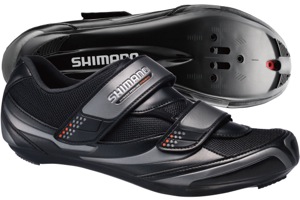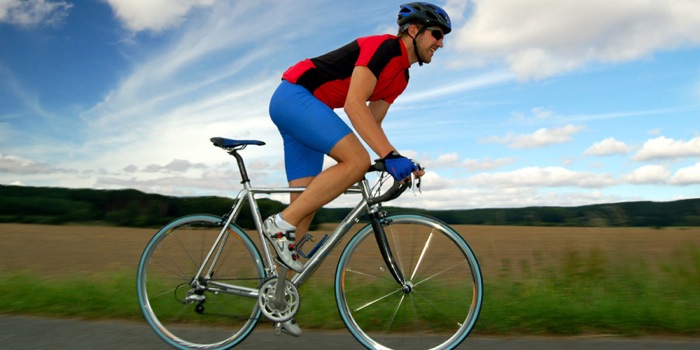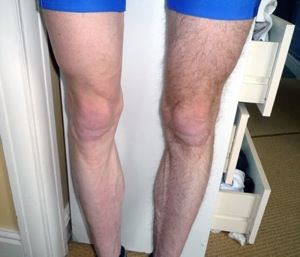New to road cycling? It can be a daunting prospect rocking on up to your local bike shop with a pocket full of money and absolutely no idea.
Some beginners are looking for a sport to increase their fitness, some caught a peloton on the telly and thought it looked cool, some rode BMX till their knees screamed for mercy and wanted to sit on a higher perch, others just want a new experience and to meet people. Whatever your reasons road cycling is a beautiful, tough and exciting sport to get into, but one that does have specific requirements if you are to truly get the most out of it.
Some of these requirements are simply a bike shop and money; others require skills only gained by getting out and getting dirty. Here are seven steps to road cycling heaven for every new cyclist.
Related articles: Approaching a bike shop for the first time? Read "10 Questions to ask your LBS when buying a bike"
1. A bike
Go to shop, buy bike. If only it were that simple. Fortunately most local bike shops are full of friendly staff that can steer you in the right direction. Your first trip may be to just find out what you need and how much they recommend you pay. If you want to experience pure road cycling then it is going to be a drop bar road bike. I would advise spending at least $1000-1500 on your first bike. This may sound a lot but it means if you love it you will get a couple of good years riding before upgrading to a 7.5kg $4000 carbon job. If you hate it, sell the bike and you might lose a few hundred bucks...but gain an experience.
2. Shoes/pedals

The Shimano RO64 is an inexpensive shoe for the beginner road cyclist.
Part of the bike shop experience is getting kitted out with everything you need. Most road bikes come without pedals as many cyclists have their own preference. Choosing pedals and shoes is often part of the whole fitting process. Let the bike shop staff be your guide here. Many shops offer decent discounts when purchasing a complete package- it never hurts to ask. It is part of road cycling to use clip-in pedals which are safer (believe it!) and allow you to cycle more efficiently and with greater speed and power. They also assist with control of the bike.
3. Clothing/Helmet
The next crucial pieces of equipment are a helmet and clothing. Most people will already have a helmet, but this is road cycling so getting the latest technology is important. This applies to helmets as well. Just make sure you remove the visor.
Clothing is also very important. Cycling jerseys need to fit snugly and are essential for carrying food, phone and other pieces of equipment. They are also made from technical fabrics designed to keep you cool and dry (summer) or warm and dry (winter). Probably the most important piece of clothing are your knicks. I always recommend bib knicks as they are the best fitting and remove pressure created by a waist band. Don't skimp here, cheap knicks use a cheap chamois (the part that protects the family jewels or female equivalent).
Comfort is key to enjoying a decent ride.
4. Shaved legs
Related article: Not sure whether to shave or not? Check out "Why do cyclists shave their legs?"
My opinion is that if you wear lycra then please shave your legs. Road cycling is very much about the look and hairy legs sprouting from tight fitting spandex is just wrong. Road cyclists shave their legs because they just do. Also if you do fall off and get a healthy bit of road rash you will thank me when changing your bandage twice a day.
If you don't want to shave then stick to baggies.
5. Tools/tubes/puncture repair
The essential road cycling kit: Mini pump, spare tube, tire levers, mini tool. Get this mobile repair kit at the point of bike purchase and you might get a few freebies thrown in. This is the time to get a quick demonstration on tube replacement by shop staff. You will be amazed how quickly an experienced cyclist can rip out a punctured tube, replace it, and pump back up to 100 psi. This is a skill which requires a few punctures to master but is key when learning to ride a road bike. Those skinny tires get flats all too often!
6. Other accessories
These are the optional bits and pieces that can be fun to play with. Firstly a computer. These come in all shapes and sizes (and prices). Simple units measure distance, speed and time. Top of the range are smart phone sized GPS computers that do everything. You can also look at good quality riding lights if you intend to be out when the sun goes down, or you could replace your mini pump with a co2 regulator....lots of options.
7. Friends or a bunch
Finally find some riding buddies or join a local bunch. Often it is friends who introduce us to road cycling for the first time, but if not, once again talk to your local bike shop about group rides. Many shops and clubs organise beginner social rides. These are a gold mine of information and a great place to learn new skills and get involved.




